Plants that Attract Monarch Butterflies
Monarch butterflies are superb pollinators, and if they are fed plants they enjoy, they will pollinate your entire garden.
Butterflies require two kinds of plants to survive: host plants and food plants. Plant a monarch butterfly garden because their populations have been progressively dropping in recent decades, mostly due to habitat loss and pesticide usage.
Complimentary information on planting gardens for other types of butterflies can be found here.
Pollinator Garden Elements
Exposed Dirt
Some bare soil in a garden provides nutrients and ground nesting places for worms, some species of bees, birds, and other pollinators.
Stems and Stalks
Insects can find cover and places to live in the dried stalks and hollow stems of plants from the previous year. These plants can also serve as habitat for pollinator larvae like leafcutter bee larvae.
Leaves and Grasses
Pollinators can attach eggs and hide from predators on the wide surfaces of leaves and grasses. They are also a source of food for hungry caterpillars.
Water Sources
Birds and bees require water in a pollinator garden to survive. It can include areas with shallow puddles and where dew and raindrops can accumulate.
Monarch Butterfly Host Plants
Butterflies lay their eggs on host plants. A butterfly host plant provides nourishment for the larval stage. Milkweed is the only plant where monarch butterflies deposit their eggs and monarch caterpillars get their nourishment. If milkweed were not there, the monarch caterpillar would not be able to grow into a butterfly.
Monarch butterflies consume a wide range of milkweeds. We feature three monarch butterfly hosts plants here.
Why are milkweeds the only monarch butterfly host plant?
Milkweed has chemicals that make monarch caterpillars poisonous to predators. Milkweeds contain a cardiac poison that affects the majority of vertebrates (animals with backbones), but not monarch caterpillars. These toxins are found in varying concentrations in various milkweed plants.
Butterfly Weed
Asclepias tuberosa is a host plant for monarch butterfly. It is be grown in full sun in well-drained, dry to medium soil. Drought tolerant, salt tolerant, and grows well in poor, dry soils, it is distinguished by its alternating leaves. Leave the seed pods on the plant and it will self-seed.

Credit: Homer D. House, New York State Botanist. Walter B. Starr of the Matthews-Northrup Company, Buffalo, and Harold H. Snyder of the Zeese-Wilkinson Company, New York, photographers., Public domain, via Wikimedia Commons
Common Milkweed
Asclepias syriaca might be the more popular plant for monarch butterfly. It grows best on normal, well-drained soil in full sun, although it may also withstand poor or dry soil. Readily propagated by seed or root cuttings, it will naturalize in the garden, taking up a lot of space. It will bloom from early to late summer.
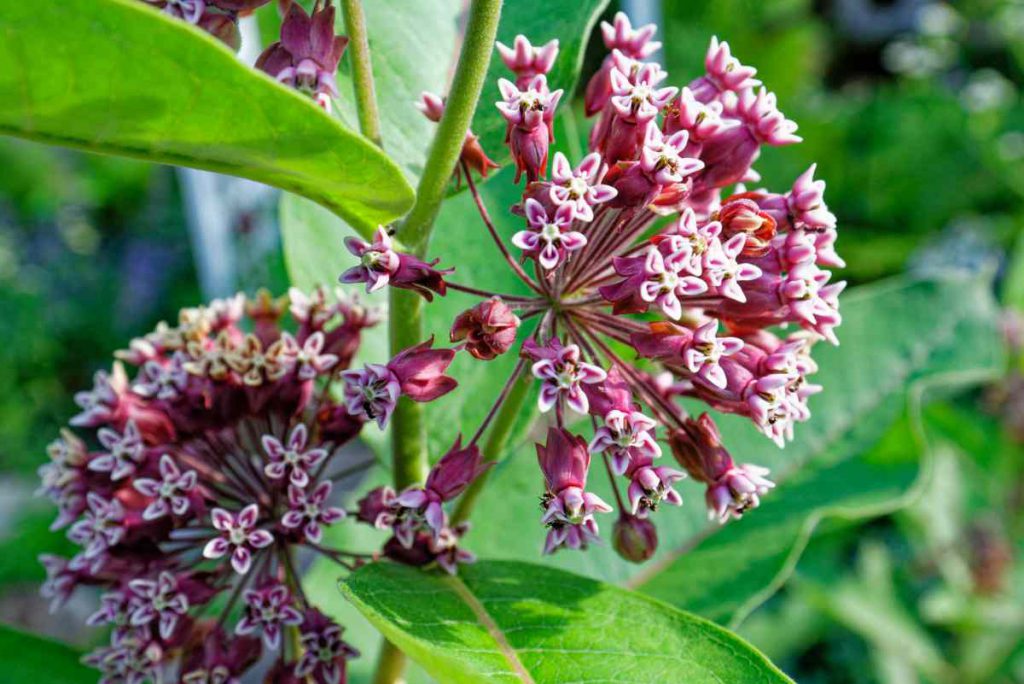
Credit: Jean Carr
Swamp Milkweed
Asclepias incarnata is later blooming among plants for monarch butterflies. It prefers full sun and medium to moist soils, although it will grow in ordinary well-drained soil as well. This perennial plant requires little care and is often pest and disease free. It normally flowers for a few weeks longer and later than common milkweed, from mid to late summer.
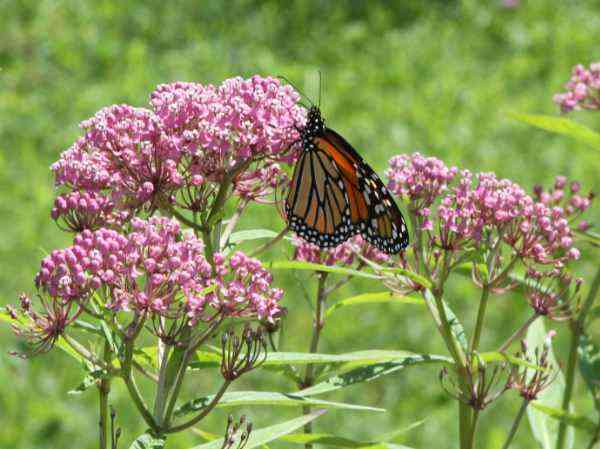
Monarch Butterfly Nectar Plants – Summer Blooming
Monarch butterfly habitat requires milkweed and nectar plants. They can be found in any field, roadside area, open space, wetlands, or urban garden. Adult monarch butterflies dine on the nectar of numerous flowers, but they exclusively nest in milkweed habitats.
Here is a long list of plants for monarch butterflies. Choose your favourite plants from the list below to create a butterfly garden. They are all companion plants. Make sure to include some summer blooming nectar plants accompanied by fall blooming nectar plants.
Anise Hyssop
Hyssop foeniculum flowers at regular intervals, providing a long nectar season and making Anise Hyssop very enticing to butterflies. It also attracts a variety of pollinators, including bumblebees, mining bees, leaf-cutting bees, sweat bees, masked bees, and hummingbirds. Goldfinches and other birds may consume the seeds.

Credit: Magnus Manske, CC BY-SA 3.0 https://creativecommons.org/licenses/by-sa/3.0, via Wikimedia Commons
Bee Balm
Growing monarda bee balm and wild bergamot plants is simple provided the soil is kept properly moist. Bee balm is a full sun plant, but can withstand partial sun, but it will produce fewer blossoms. Plant monarda plants 18 to 24 inches apart in organically rich soil.

Black-eyed Susan
Rudbeckia hirta thrives in full sun in average, dry to moist, well-drained soils. Drought tolerant but respond well to an occasional watering.
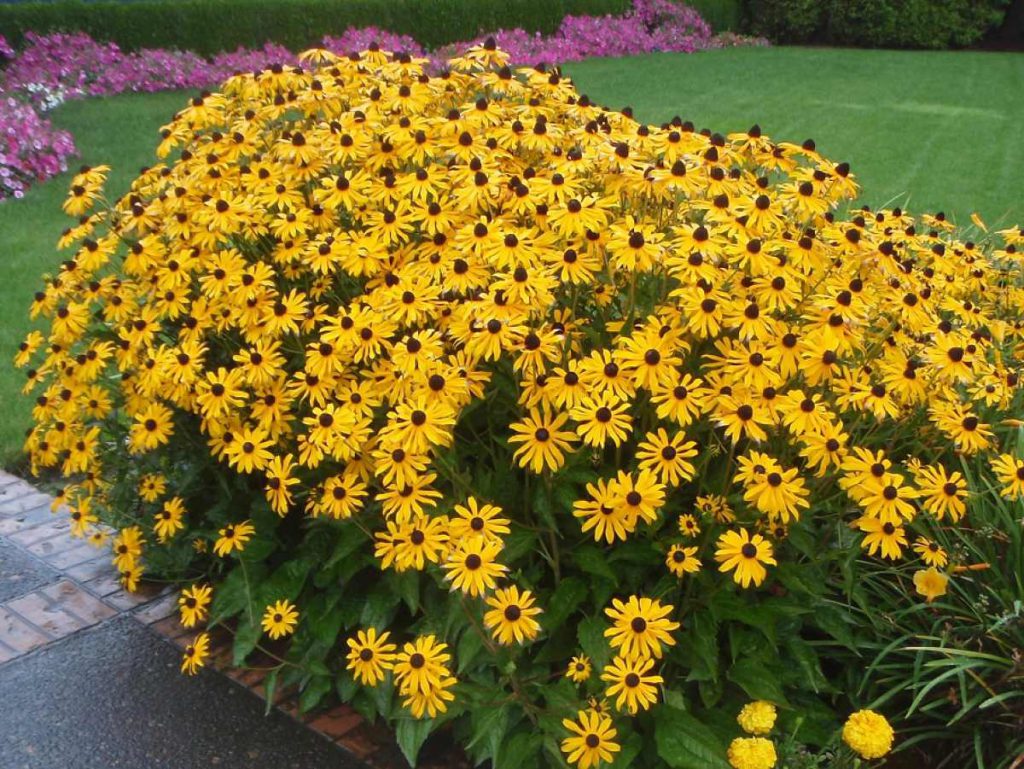
Blazingstar
Plant Liatris in full sun although it will tolerate some mild shade. Likewise, plant in well drained soil, it also tolerates low soils. They are fairly drought tolerant.

Credit: Krzysztof Ziarnek, Kenraiz, CC BY-SA 4.0 https://creativecommons.org/licenses/by-sa/4.0, via Wikimedia Commons
Butterfly Bush
Buddleia Butterfly bush thrives in full sun and average, medium moisture, well-drained soil. It prefers full sun for 8 hours a day, if possible.
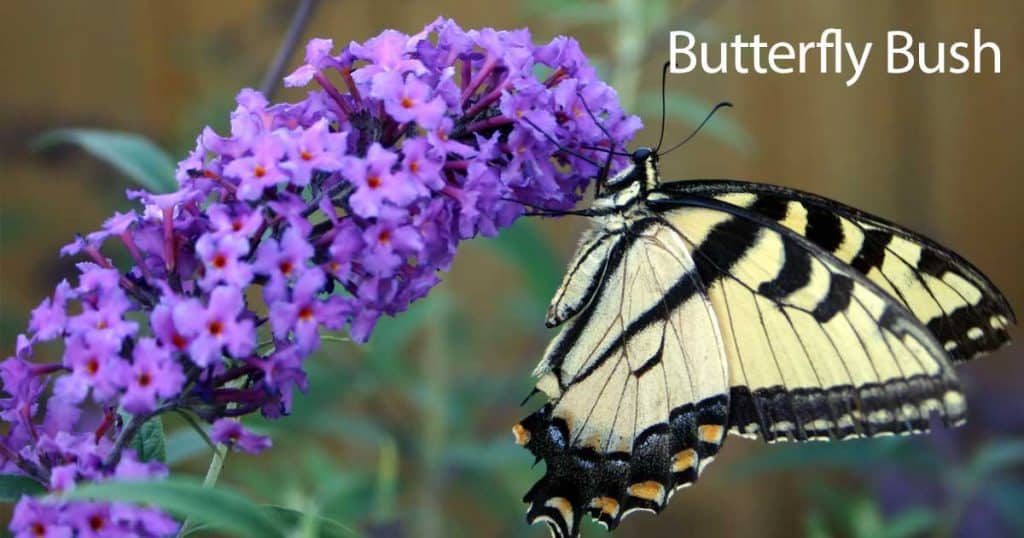
Catmint
Nepeta grows best in full sun, although the plants may also thrive in moderate shade. Soil with a high humus content and good drainage is desirable.
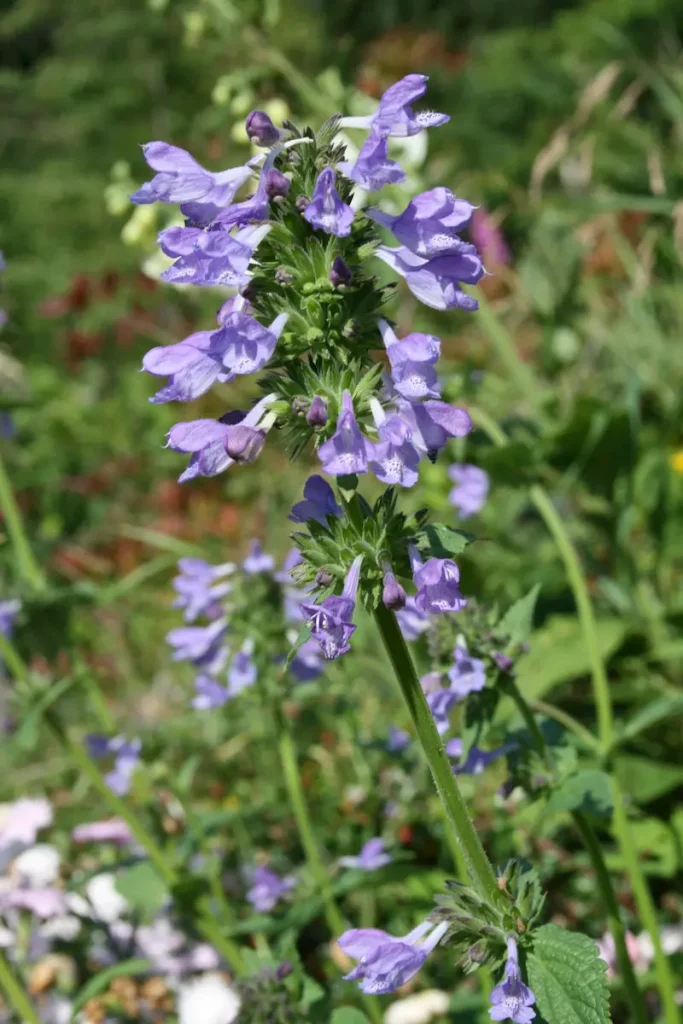
credit: Uleli, CC BY-SA 3.0 https://creativecommons.org/licenses/by-sa/3.0, via Wikimedia Commons
Coreopsis
Plant coreopsis where they will receive at least 6 to 8 hours of direct sunshine every day. Coreopsis thrives well in well-drained, wet soil. These are not appropriate plants for a poorly drained, low-lying area of the yard.
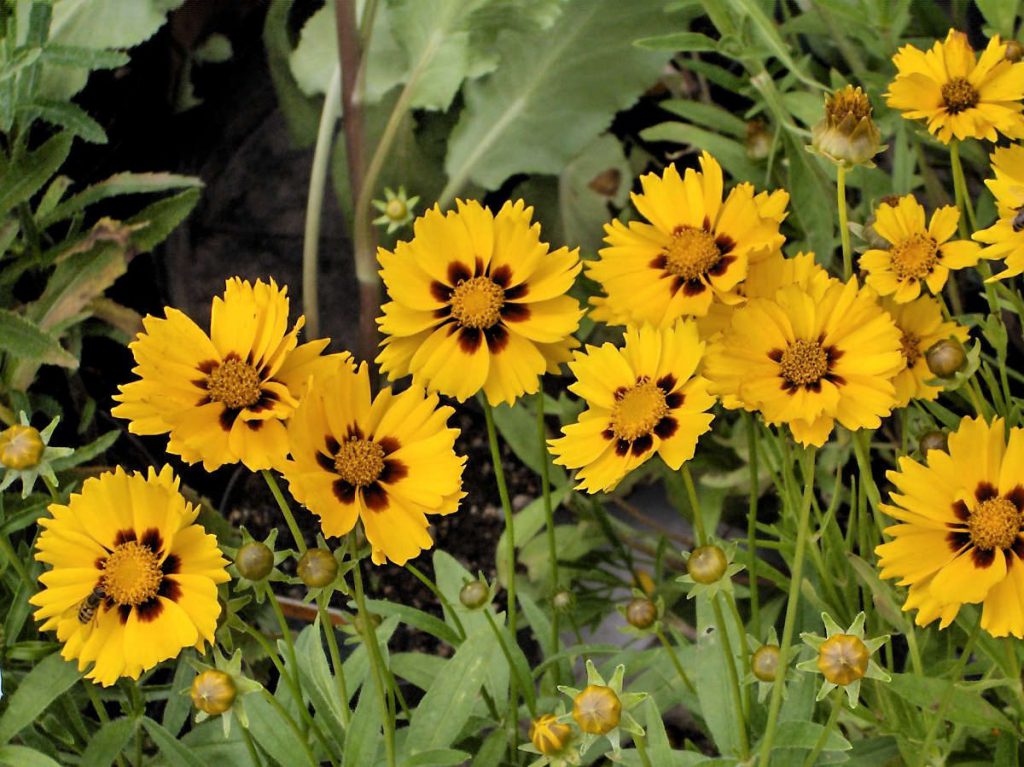
Goldenrod
Solidaga, like other wildflowers, are carefree, drought tolerant, and disease resistant.
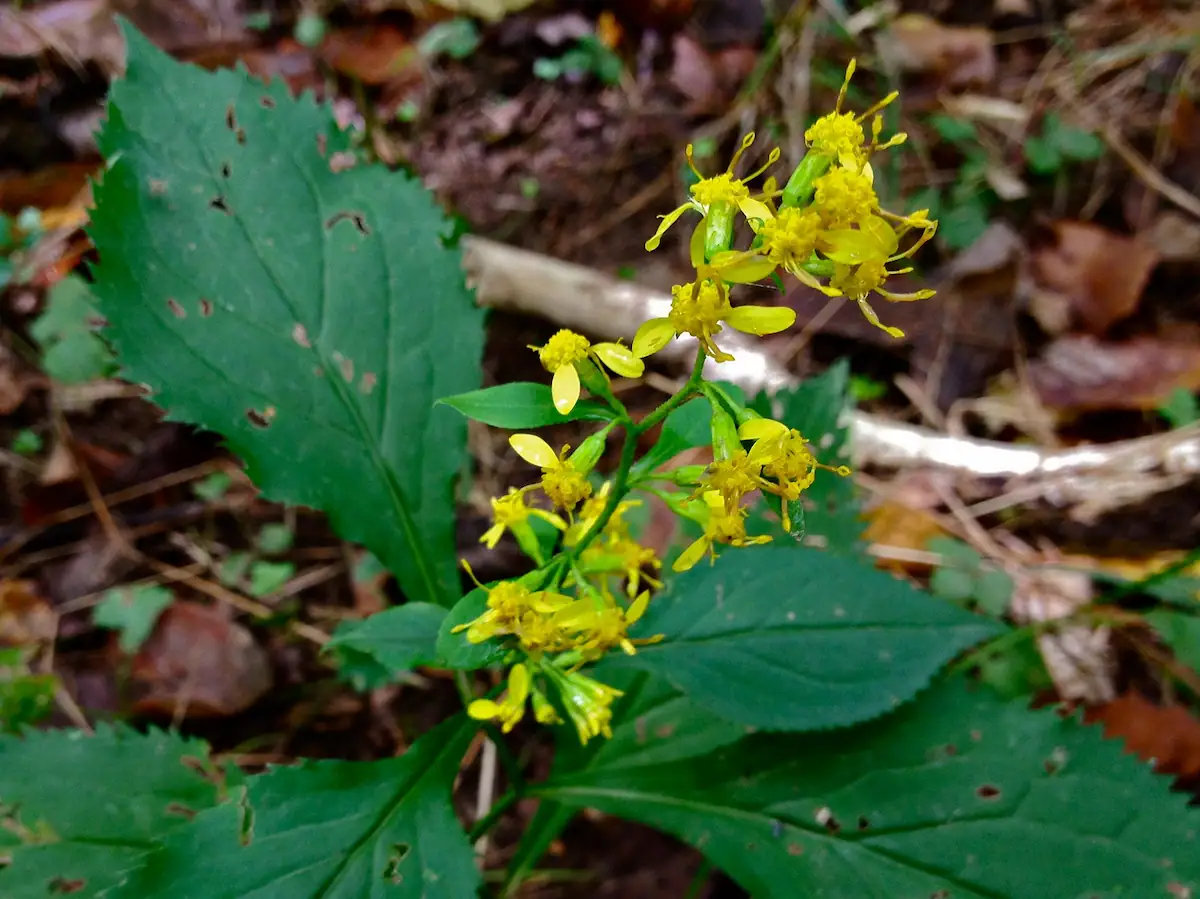
Joe-Pye Weed
Eupatorium purpurea Joe Pye weed is a blooming perennial with pink to purple blossoms that may grow up to seven feet tall. It prefers full sun to partial shade, and to be wet in ordinary to rich soil.

Credit: TIFFANYLAUFER, CC BY-SA 4.0 https://creativecommons.org/licenses/by-sa/4.0, via Wikimedia Commons
Purple Coneflower
Coneflowers, also known as Echinacea, are tough little native flowers that draw butterflies, bees, and birds to the garden! Trouble-free, coneflowers are drought-tolerant, once established. They can take the heat!
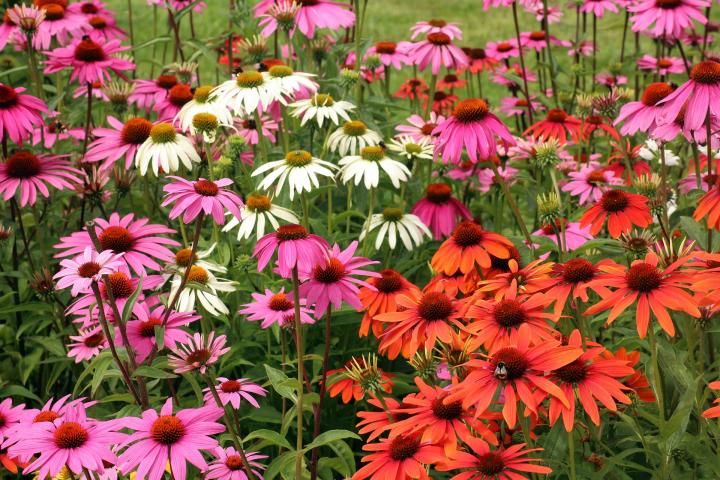
Summer Phlox
Phlox grows best in a cold, sunny location that is well-watered and has nutrient-rich soil. They thrive in full sun, preferably receiving at least 6 hours of direct sunshine every day.

Yarrow
Achillea can tolerate moderate shade, but prefers full sun. Yarrow favours loamy rich, well-drained soil, although it may also be grown in clay soil as long as it is not consistently wet. It prefers hot, dry conditions.
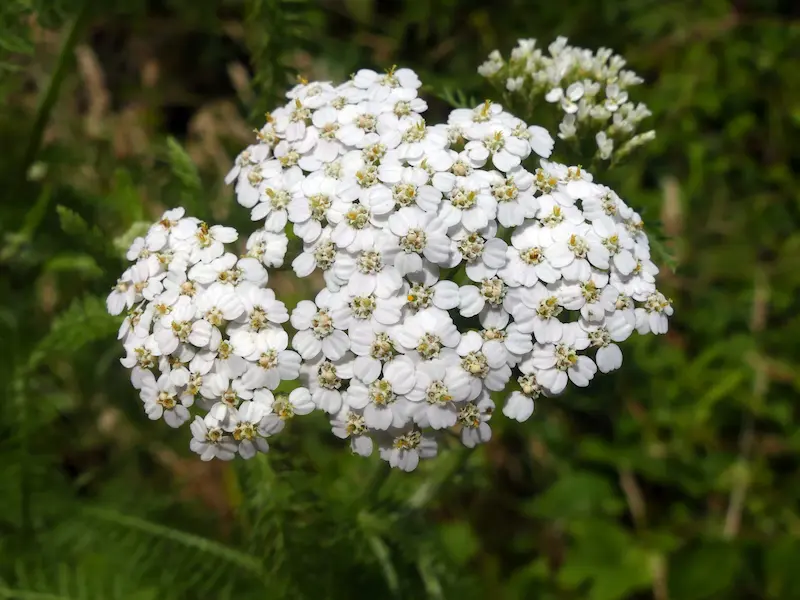
Credit: Allen Browne, CC BY 4.0 https://creativecommons.org/licenses/by/4.0, via Wikimedia Commons
Monarch Butterfly Nectar Plants – Fall Blooming
Your garden should include fall blooming nectar plants for monarch butterflies.
Baby Joe Pye Weed
Dwarf ‘Baby Joe’ Joe Pye Weed is an excellent choice for butterfly enthusiasts who lack garden space. This small cultivar grows to a reasonable 2-3′ height and spreads only a few feet. ‘Baby Joe’ has stunning purple flowers that give delightful fragrance to the late-season garden while providing critical nectar to butterflies, hummingbirds, and bees. Deer repellent.
Hydrangea
Hydrangea paniculata, Panicle Hydrangeas, grow in rich, medium moisture, well-drained soils and like full or partial sun. They don’t mind the soil type as long as it’s well-drained.
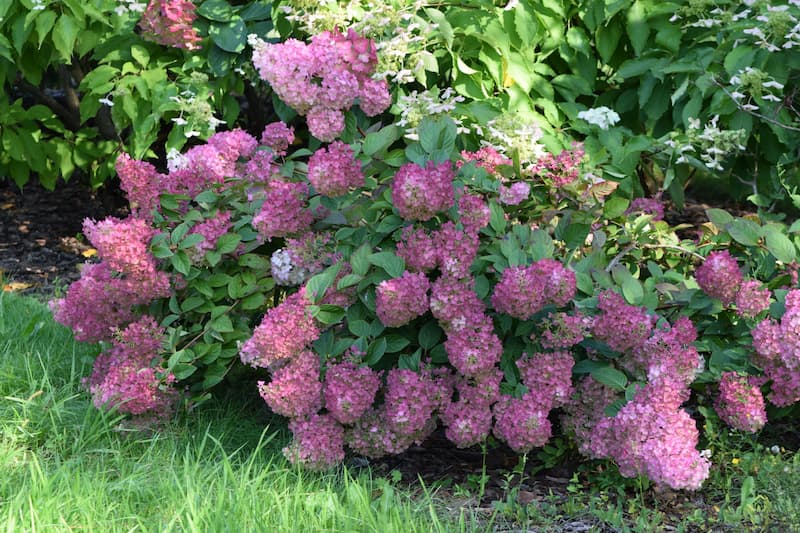
Credit: Krzysztof Ziarnek, Kenraiz, CC BY-SA 4.0 https://creativecommons.org/licenses/by-sa/4.0, via Wikimedia Commons
Ironweed
Vernonia, Ironweed, grows best in rich moist acidic soils, although it will also thrive in normal moist to wet soils in full sun. Plant in a rain garden, cottage garden, meadow, alongside streams or ponds, or towards the back of the border.
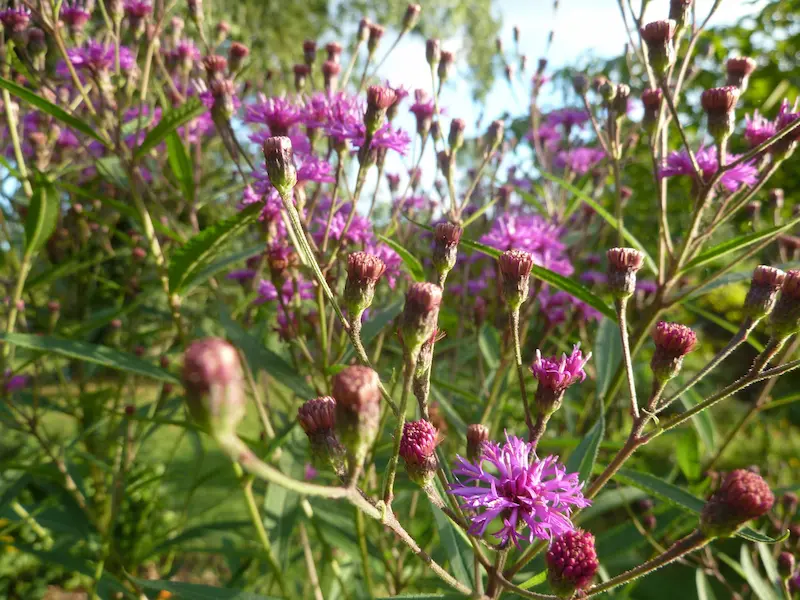
Credit Marco de Boer, CC BY-SA 3.0 https://creativecommons.org/licenses/by-sa/3.0, via Wikimedia Commons
Meadow Blazingstar
Liatris ligulistylis, often known as blazing star or gayfeather, is a summer-blooming perennial. Liatris, a nectar source for butterflies, should be planted in full sun and well-drained soil. During the first growing season, water often. Once established, Liatris is drought resistant.
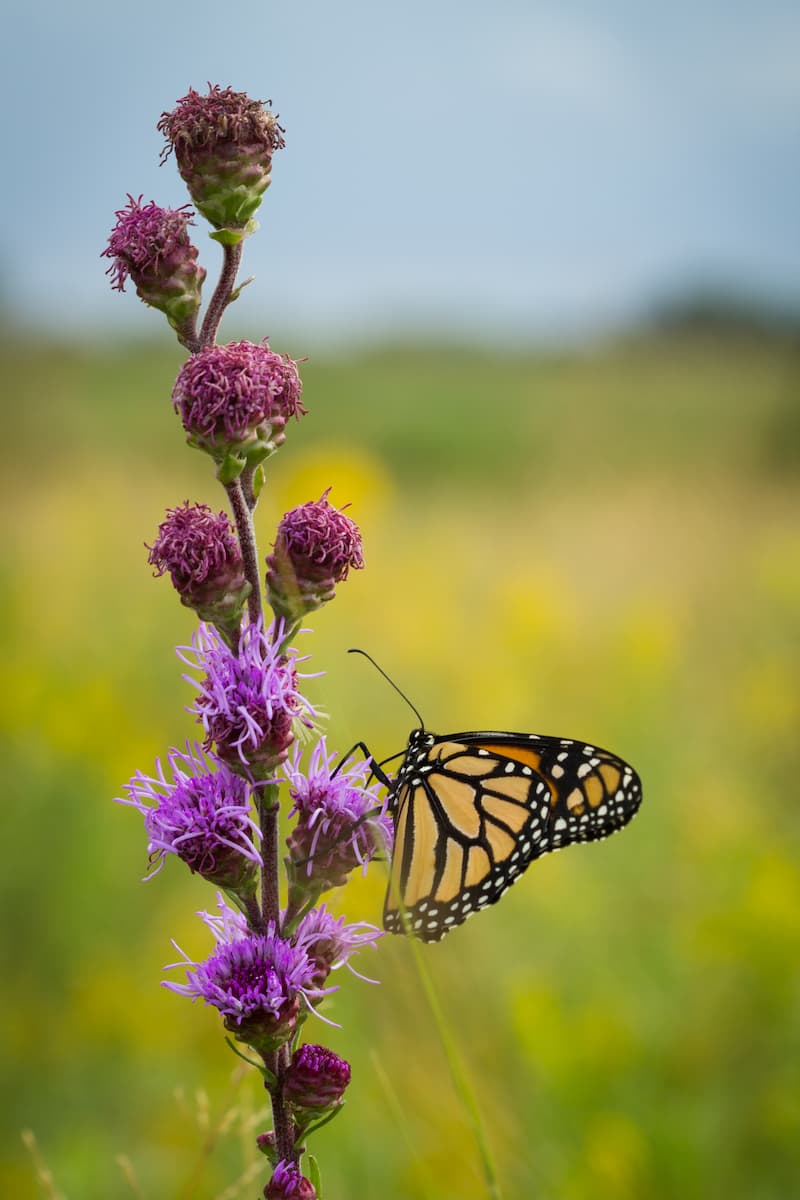
New England Aster
Symphyotrichum novaeangliae is a magnet for butterflies. Easily grown in average, medium, well-drained soil in full sun. Prefers moist, rich soils. Pinching back stems several times before mid-July will help control plant height, promote bushiness and perhaps obviate the need for staking.

Sedum
Sedum spectabile grows on poor, sandy soils with good drainage. The majority of sedum plants thrive in full sun, which means at least six hours of direct sunshine on most days. Some types may withstand partial shade, but they won’t be as strong or blossom as abundantly as they would in full sun.
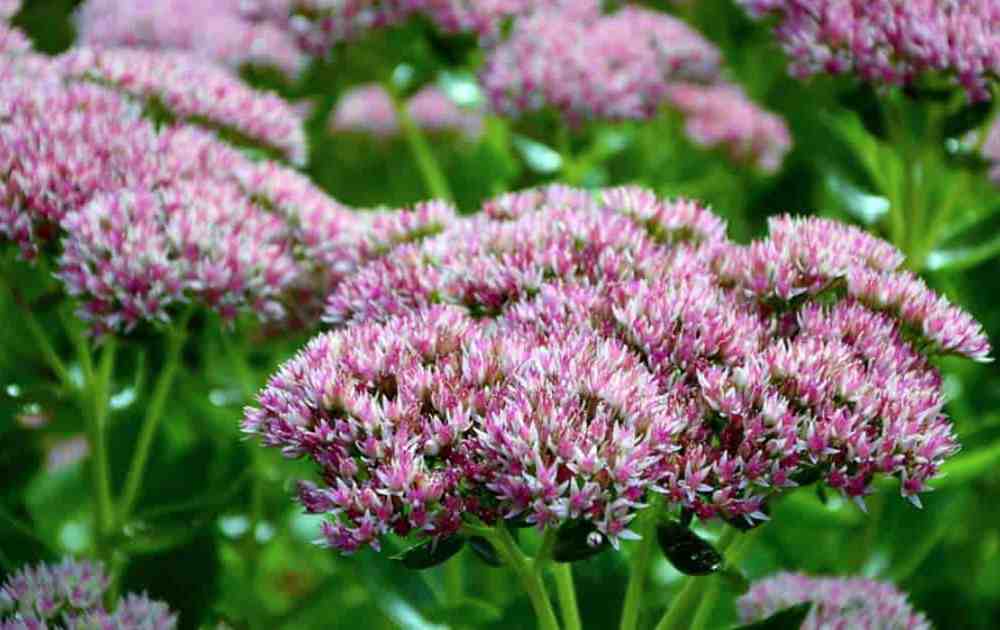







Leave a Reply
You must be logged in to post a comment.